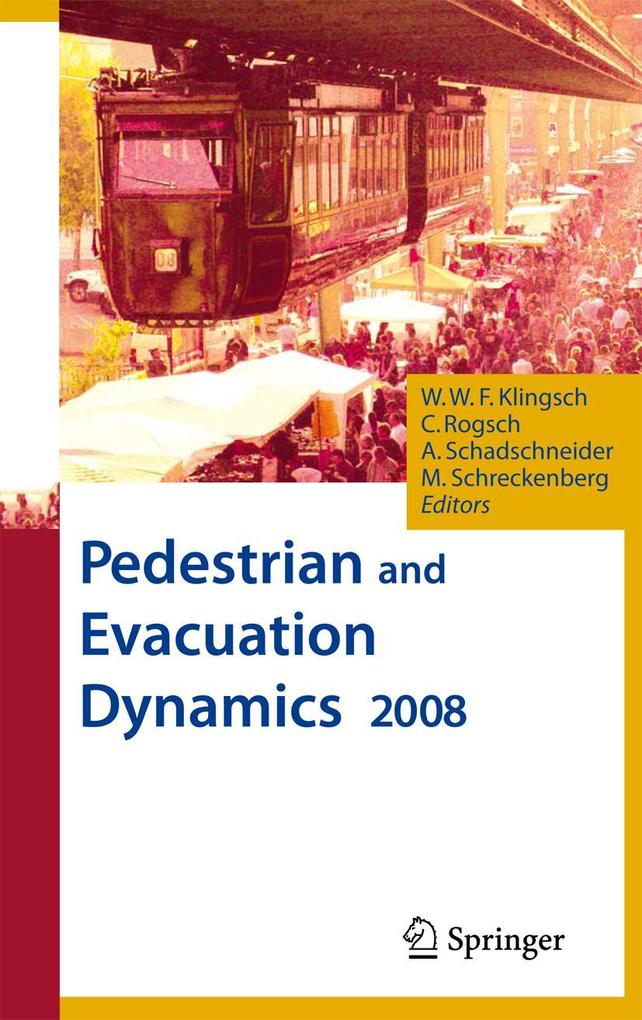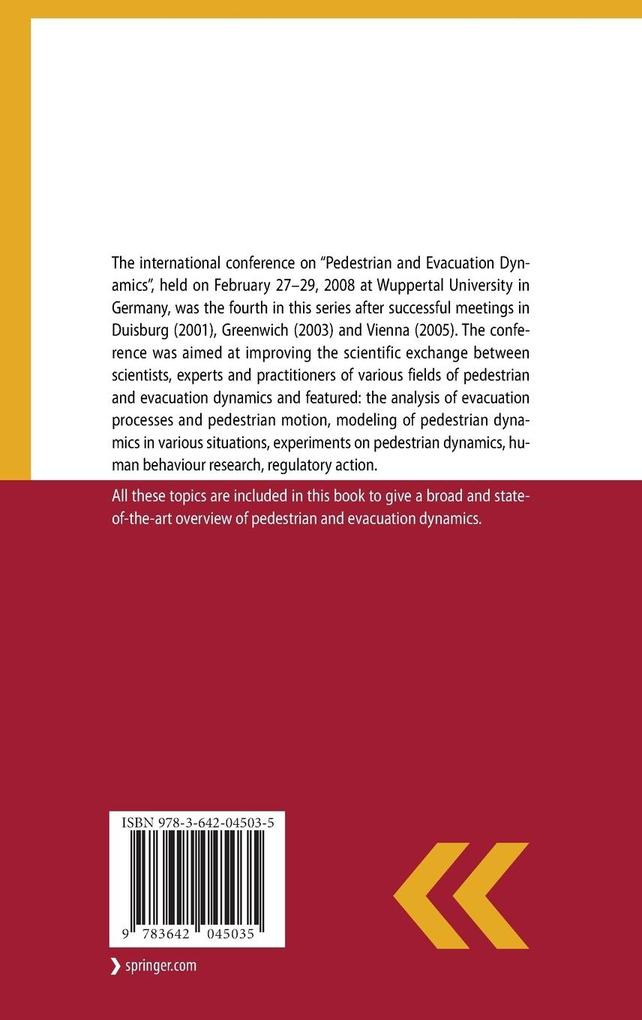
Zustellung: Fr, 09.05. - Di, 13.05.
Versand in 1-2 Wochen
VersandkostenfreiProper management of evacuation processes is one of the basic requirements within life safety concepts, and it helps to prevent critical situations from getting out of control. Super high-rise buildings, deep underground stations or shopping areas, airplanes for the mass transportation, sport stadiums or meeting places with tens of thousands of visitors they all call for new dim- sionsinsafeevacuationplanning. Researchresultsinevacuationdynamicsgive answers to these challenges. PED-conferences are the prime address for all research in this ? eld. The increasing number of participants from di? erent ? elds of research re? ect theirimportance. AfterPED-conferencesinGermany(Duisburg, 2001), Great Britain (Greenwich, 2003) and Austria (Vienna, 2005), the PED 2008 C- ference in Wuppertal/Germany reached new heights with more than 120 p- ticipants from 20 countries and nearly 100 presentations. The wide ? eld of topics discussed in presentations also re? ects deeper understanding of fun- mental e? ects as well as the stronger interactions between di? erent research areas. New test designs o? er new important basic data, new analysis pro- dures open a better understanding of complex interactions, new model - signs allow more realistic simulations, and the input from architectural - sign and the medical references on physical limitations help to realize a safe evacuation design. On the one hand all these data give an outlook of future possibilities and sometimes they open an astonishing new understanding of seemingly well-known data. On the other hand, they make clear the limi- tions of our current knowledge.
Inhaltsverzeichnis
Experiment and Evacuation. - Simulation and Modelling. - Psychology. - Miscellaneous.
Produktdetails
Erscheinungsdatum
12. Januar 2010
Sprache
englisch
Auflage
2010
Seitenanzahl
848
Herausgegeben von
Wolfram W. F. Klingsch, Christian Rogsch, Andreas Schadschneider, Michael Schreckenberg
Verlag/Hersteller
Produktart
gebunden
Abbildungen
XIV, 833 p.
Gewicht
1414 g
Größe (L/B/H)
241/160/51 mm
ISBN
9783642045035
Entdecken Sie mehr
Bewertungen
0 Bewertungen
Es wurden noch keine Bewertungen abgegeben. Schreiben Sie die erste Bewertung zu "Pedestrian and Evacuation Dynamics 2008" und helfen Sie damit anderen bei der Kaufentscheidung.








